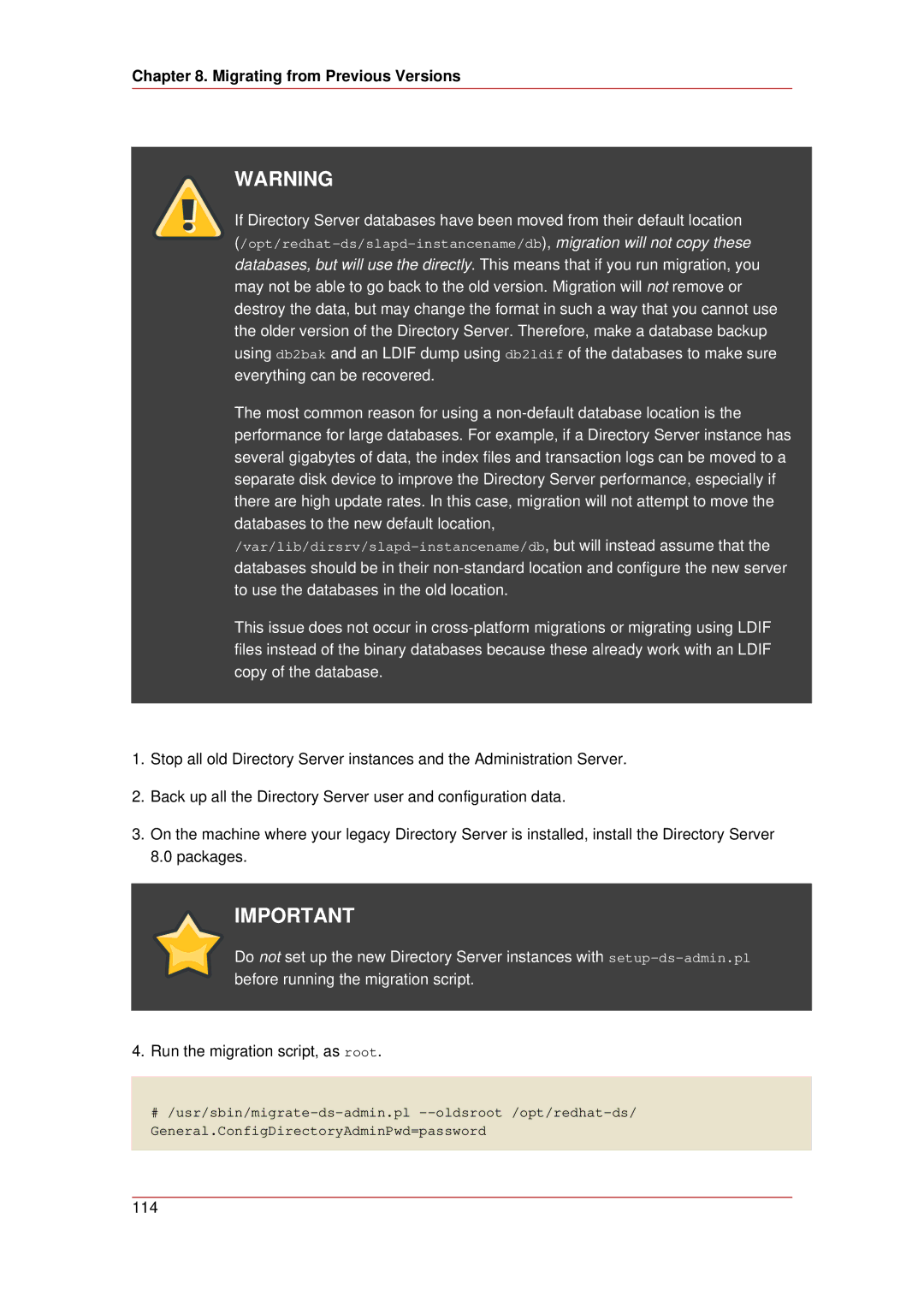
Chapter 8. Migrating from Previous Versions
WARNING
If Directory Server databases have been moved from their default location
The most common reason for using a
This issue does not occur in
1.Stop all old Directory Server instances and the Administration Server.
2.Back up all the Directory Server user and configuration data.
3.On the machine where your legacy Directory Server is installed, install the Directory Server 8.0 packages.
IMPORTANT
Do not set up the new Directory Server instances with
